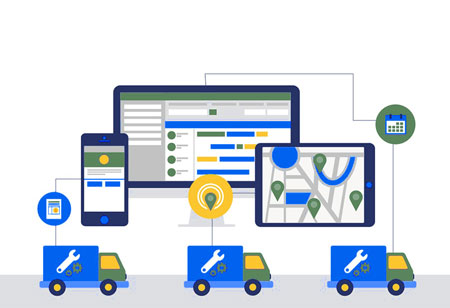THANK YOU FOR SUBSCRIBING
How Is Automated Field Service Scheduling Beneficial for Enterprises?
With the help of automated route and traffic mapping, instant calculations occur, allowing the best available engineer to be selected and routed to the customer site thereby reducing fuel costs.

By
Apac CIOOutlook | Friday, December 14, 2018
Stay ahead of the industry with exclusive feature stories on the top companies, expert insights and the latest news delivered straight to your inbox. Subscribe today.
Whether it’s an e-commerce store or a service provider, the efficiency in field service is a must factor as it translates directly into increased profitability. The Field service management automates and streamlines the entire service process, provides connected and disconnected mobility, and integrates with the Enterprise resource planning system. The adoption of automated scheduling software can free up time to concentrate on developing a team and maximizing revenue.
1. Unexpected Changes: Although a schedule is planned with due care, unexpected and last-minute changes can occur. But, automated software solutions can minimize these risks while maximizing efficiencies. Reoptimization happens in real-time, providing both employees and customers with an immediate update. This strategy could help in enhancing brand perception.
2. Graphical User Interface: GUI’s are a successful process for managing resources as it is quick and swiftly deals with large amounts of data. Using a few applications, team members can use a calendar style view, representing each technician’s day, jobs and skill sets along with a map view for both staffs and call out locations.
3. Automating decisions: Automated scheduling software is aware of everything from efficiently booking service calls to the customers to when to not schedule an appointment. Customer satisfaction can be affected if a technician lacks the skills required to complete a particular job. Focusing on the employee skills, it can be ensured that the right person with the necessary skills and equipment is at the right customer’s site.
4. Minimizing fuel costs: Time spent by employees to travel to customer sites can cost business. That’s where automated route and trafficking comes into the picture. With the help of automated route and traffic mapping, instant calculations occur, allowing the best available engineer to be selected and routed to the customer site thereby reducing fuel costs.
5. Enhancing staff morale: Although many engineers would prefer driving, it is unproductive for their job, and they must prioritize on spending their time more on the customer sites. The reduction in the travel-to-work time ratio enhances job-satisfaction levels for the field personnel.
Check out: Enterprise Technology Review





